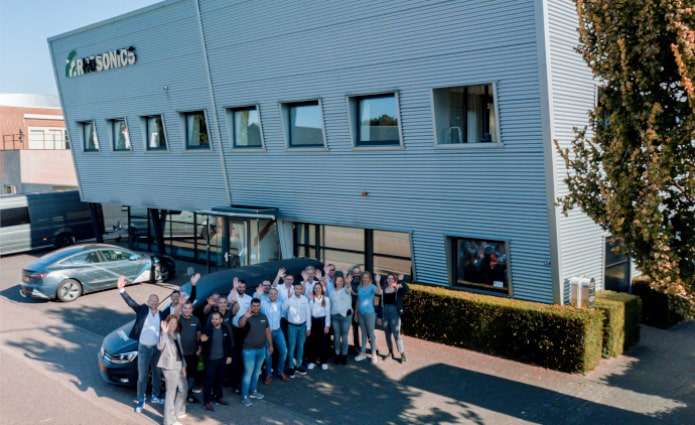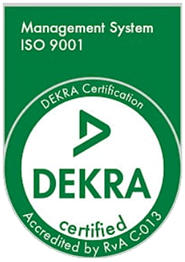The Future of Tailings Management
Friday 24 May 2024
The mining industry stands at a crossroads, facing mounting pressures to reduce its environmental footprint while meeting the growing global demand for resources. A critical element in this equation is tailings – the leftover materials from ore processing – which have long posed a significant environmental challenge. However, a paradigm shift is underway, fueled by innovation, collaboration, and a commitment to sustainability. The future of tailings is no longer just about waste disposal. It’s about unlocking value, embracing circularity, and transforming liabilities into assets.
To understand the complexities of tailings and their potential impact, it’s crucial to explore their composition and the challenges they present. For a comprehensive overview, see our in-depth article on mine tailings here.
From Burden to Opportunity: The Evolution of Tailings Management
Traditionally, tailings were viewed as a burdensome byproduct of mining, often stored in massive dams or ponds that posed risks of contamination, structural failure, and ecological damage. The devastating consequences of tailings dam failures in recent years have underscored the urgency of finding safer, more sustainable solutions. Anglo American’s innovative Hydraulic Dewatering System (HDS), which significantly reduces the volume and risk associated with traditional tailings storage, exemplifies this shift in perspective.
Today, tailings are increasingly recognized as a potential resource rather than just waste. This shift in mindset is driving a new wave of innovation focused on reprocessing tailings to recover valuable minerals and metals. Estimates suggest that reprocessing could unlock a staggering $370 billion in value globally. Companies like Metso are at the forefront of this movement, developing advanced technologies to extract materials that were previously considered uneconomical to process.
A Circular Economy in Mining: Reducing Waste, Creating Value
The concept of a circular economy, where resources are kept in use for as long as possible, is gaining momentum in the mining industry. Tailings, with their residual metals and minerals, offer a unique opportunity to apply circular economy principles. Reprocessing tailings not only reduces waste but also generates additional revenue streams, contributing to a more sustainable and profitable operation.
However, the transition to a circular economy in tailings management is not without its challenges. The economic viability of reprocessing can vary depending on factors like the type and concentration of minerals present in the tailings, as well as the availability of water and energy. Nevertheless, innovative solutions like dry stack tailings filtering and the use of renewable energy sources can help mitigate these challenges.
Technological Innovation: The Engine of Transformation
Technological advancements are playing a crucial role in enabling this transformative shift. From AI-powered predictive analytics for risk assessment to automation of tailings processes, technology is enhancing safety, efficiency, and sustainability in tailings management.
For example, companies like Weir are investing heavily in research and development to optimize tailings processing and reduce the overall environmental impact.
Newcrest Mining’s Cadia Valley Operations in Australia serve as a compelling example of how technology can drive sustainable change. By implementing thickened tailings technology and advanced water recycling systems, they have achieved a 90% reduction in water usage and an 80% recovery rate of tailings solids.
A Holistic Approach: Balancing Environmental, Social, and Economic Imperatives
The future of tailings management requires a holistic approach that considers the interconnectedness of environmental, social, and economic factors. This means going beyond technological solutions to address community concerns, ensure worker safety, and minimize the long-term ecological footprint of mining operations.
Engaging local communities and stakeholders is crucial for building trust and ensuring that tailings management practices align with local needs and priorities. Companies must prioritize transparent communication, meaningful dialogue, and active participation in decision-making processes.
Evolving Regulations: A Catalyst for Change
The regulatory landscape surrounding tailings management is evolving rapidly, with a growing emphasis on stricter standards, increased transparency, and greater accountability for mining companies. This presents both challenges and opportunities for the industry. While compliance with new regulations may require significant investment, it also creates a powerful incentive to adopt innovative technologies and practices that can improve safety, reduce environmental impact, and enhance operational efficiency.
Conclusion: The Path to a Sustainable Future
The future of tailings management is bright with potential. By embracing a circular economy mindset, leveraging cutting-edge technologies, and fostering collaboration across stakeholders, the mining industry can transform tailings from a liability into a valuable asset. Companies like Rhosonics, with our innovative SDM ECO, are leading the way in providing the tools and insights needed to achieve this transformation. A commitment to sustainable tailings management is not just a responsible business practice; it’s a strategic imperative for the long-term success and resilience of the mining industry in an increasingly environmentally conscious world.
Want to have frequent updates on our products? Then please subscribe to our newsletter or follow us on our social media accounts at LinkedIn, Twitter and Instagram.
Receive our technical update?
Fill in your name and email address and we’ll keep you in the loop on our latest technology updates.



